Despite still considering it a threat, streamers and broadcasters want to work with talent who have found fame on the platform, while producers see it as a place to collaborate with content creators and IP owners
One of the existential fears paralysing the TV industry at present is the ongoing shift of audiences to YouTube. The Google-owned streamer is now the second most-watched service in the UK behind the BBC, according to UK regulator Ofcom, and similar trends are occurring in countries around the world.
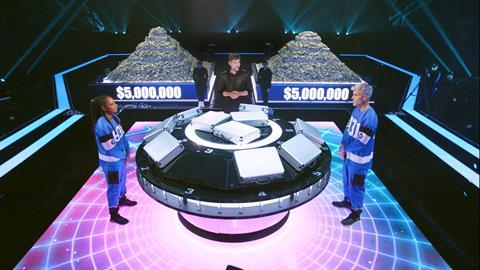
However, collaborations between producers and either the stars who have made their fortunes on YouTube, or the creatives developing IP via the service, have surged recently, with shows ranging from Beast Games (Prime Video) to Inside (Netflix) and Blue Therapy (the UK’s E4, Streamz in Belgium and Netflix globally). It highlights a growing ecosystem between the two mediums that is reinvigorating the format sector, and an increasingly nimble set of producers.
Take Tresor, for example: this long-established German production company (now owned by Keshet International) recently bought the rights to remake the American YouTube format Hot Ones, in which celebrities are interviewed as they devour increasingly spicy chicken wings.
The show embodies the simple and attention-grabbing aesthetic of what makes many YouTube hits go viral. It’s also a serious revenue earner – the format was originally created by Chris Schonberger from US-based First We Feast, which former owner BuzzFeed recently sold to investors for $82.5m (£61m).
Going it alone
Yet rather than remaking Hot Ones for traditional German TV, Tresor – the producer behind shows such as The Real Housewives Of Munich and I Can See Your Voice – is remaking Hot Ones in German for YouTube.
“We approached streamers in Germany but they weren’t interested,” says Tresor managing director Axel Kühn, despite Canal + having already remade the format in France. “We eventually found one who was interested but they couldn’t find a sponsor. So we thought if the streamers don’t see the potential, we’ll do it ourselves.” Uber (and its food delivery service) was a natural partner for a show about incredibly spicy chicken wings.
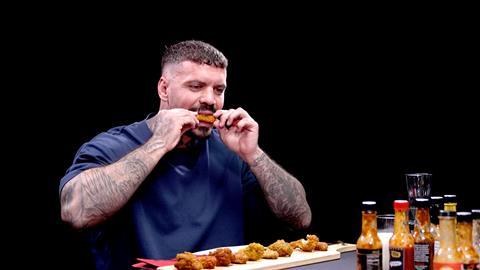
Big YouTube stars don’t necessarily need TV for financial reasons (influencer collective The Sidemen have a combined total of more than 155 million subscribers and have created their own clothing, cereal, vodka and venture capital businesses), but they may wish to cross over into the territory for other reasons: reaching new audiences, longevity (social media stars of today may be the dinosaurs of tomorrow) and the opportunity to work on projects with the production values that TV still offers.
For traditional TV producers, YouTube offers the opportunity to strike deals with influencers or to find format IP that has gone viral for adaptation – it also serves as an alternative route to production.
“You can produce a mini version of your idea, share it online and if it doesn’t work, you can pivot”
Salla Konza, Pig & Horse
Rather than investing months and often years into developing a show for a commissioning exec who may never greenlight it, smaller production companies can produce formats relatively cost-effectively for YouTube.
“With a small budget, you can produce a mini version of your idea, share it online and if it doesn’t work or needs tweaking, you can pivot. And, of course, you have full IP ownership,” says Salla Komza, the Finnish actress turned managing director of recently launched label Pig & Horse Productions (Reflections Of Gaugin), which is using YouTube as a key part of its development process.
Test-driven idea
Komza says that the data the platform provides can also be vital: “If your ultimate goal is to be streamed on a traditional platform, you can approach commissioners with a test-driven idea that already has millions of interactions, rather than simply presenting a pitch deck or sizzle reel.”
The producer-actor, who is working with Anssi Rimpelä, former head of development at Fremantle Finland, on several projects, adds that using YouTube to create “format beats and repeatable structures” means IP can be adapted to create successful formats for more traditional streaming and linear platforms.
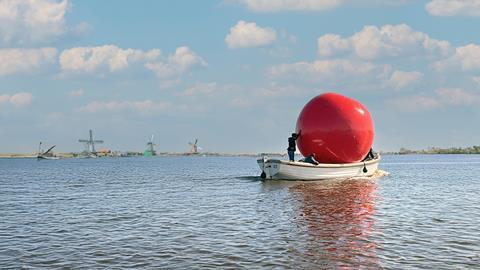
Big players are also developing IP this way. Let’s Play Ball is a co-development from Banijay Benelux label Endemol Shine Nederland, Talpa Studios and Signal.Stream. The show, in which celebrity-led teams of contestants roll a gigantic ball through varied terrains (from city streets to deep countryside), certainly fi ts the riotous aesthetic normally associated with YouTube shows.
It was piloted on YouTube via StukTV, where it picked up more than 1.2 million views, and now the series will make its debut this summer on Netherlands’ SBS6.
Such adaptations need to create buzz to attract a digital audience but must not alienate traditional TV viewers, and it is important not to drown the show in production values but “keep the heartbeat that made it a success on YouTube”, says James Townley, chief content officer, development, Banijay Entertainment.
In a challenging commissioning environment, having multiple established players on board also means the risk of making a groundbreaking format can be alleviated. “If everyone brings something to the party, you can all win,” says Townley.
Branded opportunity
For producers who have worked their entire careers for the incumbent linear and streaming outlets, the past few years of commissioning cuts have presented a mounting challenge. Branded content has offered one growing line of finance, and as more companies invest ad spend on YouTube and its shows, the gap between the production values of formats on the service and traditional TV shrinks.
UK-based Cowshed Collective, which works with The Sidemen on reality show Inside for Netflix, initially faced resistance from incumbent players when it first started pitching ideas.
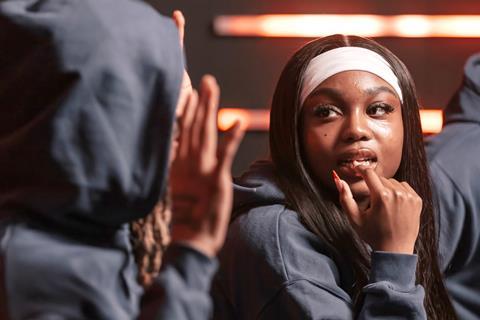
“We felt like we were banging our heads against a brick wall, commissioners would not open an email,” says chief executive George Cowin. “Five or six years ago, it was just brands that were interested in working with us – and even then it was challenger brands.”
Today, it’s a different story. “We are invited by commissioners from all around the world to pitch ideas,” says Cowin, who has recently been working on Netflix’s US remake of Inside.
For shows involving brands, the process often involves production companies running days in which a handful of formats developed to a company’s brief – across genres such as quiz, dating, cooking or game – are tested. These days, and any pre-development involved, can cost anything from £20,000 to £80,000, depending on the quality of the production values required.
Some companies even create episodes on these days, which will then be published on YouTube. But for most higher-budget series, full series of episodes will be produced once a brand moves to commission.
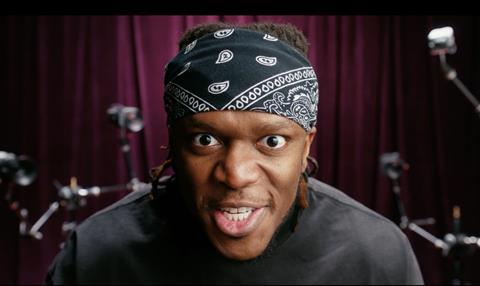
“Brands establish if the combined cost of paying an influencer, running TikTok accounts, and the rest of their digital advertising budget, is a better investment than creating a YouTube show that has the potential to become essential viewing for their target audience,” explains Cowin. “The content of the YouTube series can then be sliced up to use as engaging content to post across the other social media platforms.”
Media agencies work out appropriate budgets for brands to commit to and, in this sense, it is these agencies that set the ambition for a show’s production values.
The financial models of YouTube-first content can be complex, often with upfront payments and revenue shares. Kuhn won’t reveal details about his agreement with Uber Eats, but describes it as “more than a funding deal”.
“It’s a partnership where Uber Eats is not only investing in the production but also massively promoting the show via its social media channels, app and email. Together we’re growing the channel and the show, and we hope to continue this partnership next year and beyond.”
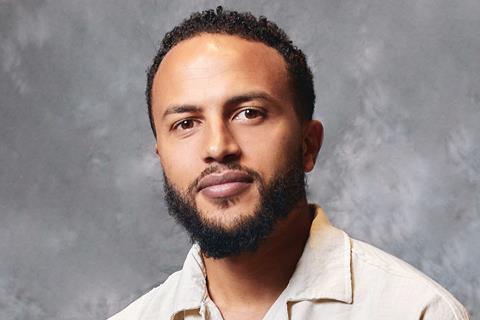
As once separate worlds move closer together, skills from both YouTube and traditional TV complement the final product. Townley says the companies within the 21-territory Banijay group that last year made more than 250 new non-scripted formats are encouraged to “hire in a diverse spectrum of expertise” to adapt to this growing sector.
“We speak TV,” says Luti Fagbenle, founder of Osun Group, which adapted Blue Therapy from the original YouTube hit made by Andy Amadi of TrendCentrl.
Producers with a track record in TV – Osun’s Fagbenle was behind Maxxx for Hulu while its drama chief, Sheila Nortley, worked on Netflix’s Supacell and and Harlan’s Coben’s Stay Close – understand the industry culture and needs, in areas such as presenting budgets and compliance, that YouTubers often do not.
“If you bring tens of thousands of your followers to the show, that’s a good chunk of marketing already delivered”
Luti Fagbenle, Osun Group
TV execs also know the value of what YouTube can bring to traditional TV. “YouTubers are sometimes simply seen as YouTubers,” says Fagbenle. “But in reality, they’re presenters, they’re directors, they’re a production company. Andy Amadi invested a serious amount of money into Blue Therapy when making that show on YouTube.”
Finding your audience is also paramount for any show and many successful YouTubers are, by necessity, already proven marketers. “If you bring tens of thousands of followers to your show, that’s a good chunk of marketing already delivered,” says Fagbenle.
Spotting potential
Tresor didn’t expect Hot Ones to be particularly profitable at first, but with six episodes now released (at time of writing) via a weekly drop, the views are stacking up.
“In total, these shows have reached 17 million views on TikTok, 11 million on Instagram and 1.5 million on YouTube,” says Kühn. “And even the lower figures of 80,000 would not be considered poor for a daytime show on a linear channel.”
“YouTube-inspired shows give confidence to the market that is absolutely needed in order to reinvigorate it”
James Townley, Banijay
Talent agents are spotting the show’s potential too. “Agents for German celebrities have been clamouring to get their clients on the show and a large print and digital media organisation has approached us to discuss creating related content for it,” Kühn says.
Like the rest of the TV world, the format industry has been in risk-averse mode for some time, but this flurry of YouTube-inspired shows is providing a rare pocket of groundbreaking hits. “They give a confidence to the market that is absolutely needed in order to reinvigorate it,” concludes Townley.


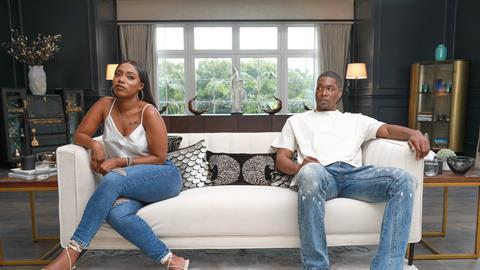






No comments yet